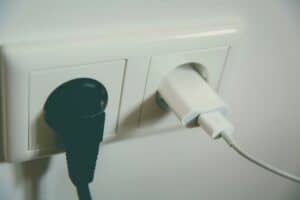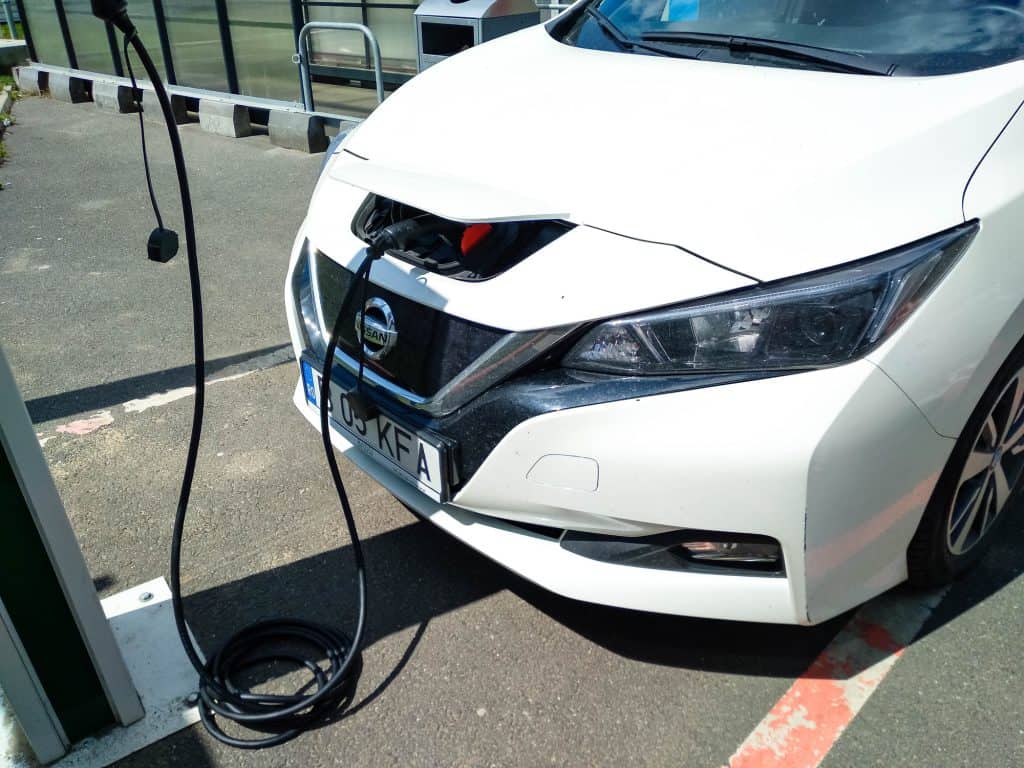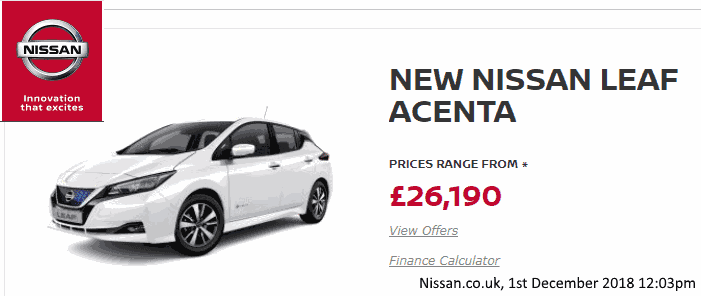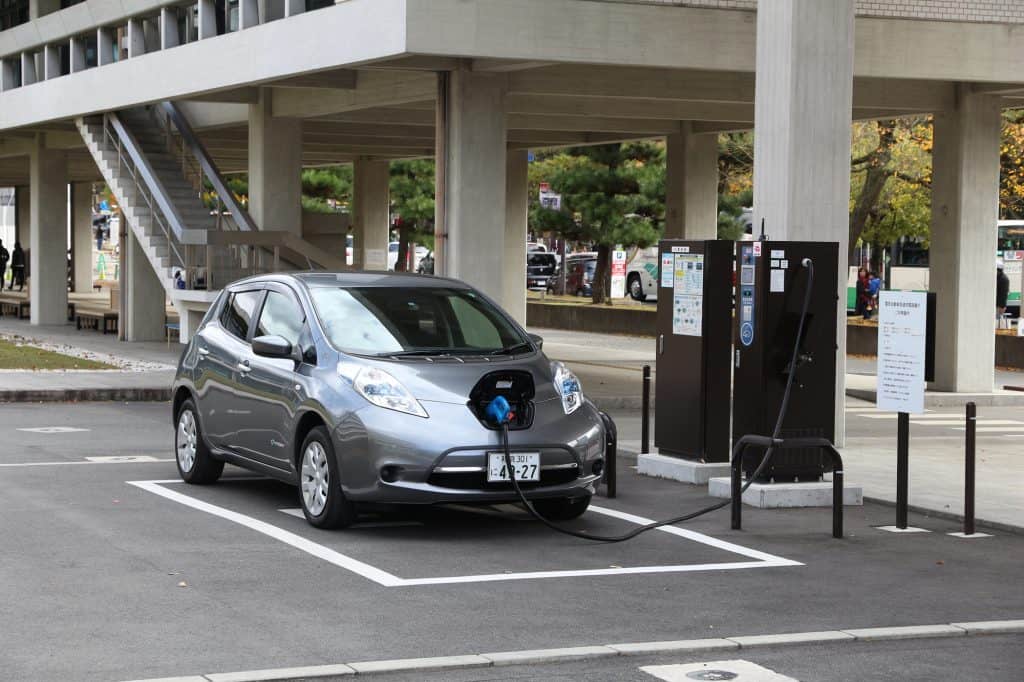As electric vehicles have grown in popularity in recent years, the Nissan Leaf has emerged as one of the most popular models. One of the top things people think and worry about when purchasing or making the switch to an electric car is charging.
There are many options available for those looking to “go electric.” If you’re like many who have purchased a Nissan Leaf, for instance, then you can use the standard level 1 charger that came with the car via a home outlet. You could also purchase a wall-mounted charging station that would offer a faster solution, and also allow you to install both indoors and outdoors. In today’s article, we’re focusing on the level 1 charging option and asking, “is it practical?”. The short answer is:
“Trickle charging” a Nissan Leaf on a level 1 charger (110-120V) will only usually add 3-4 miles of range per hour usually, but there’s a bit more to know that just that.
What is “Level 1” Charging?

Put simply, level 1 refers to standard charging equipment, usually factory issued but also available for purchase, that uses a 120V alternating-current (AC) plug. In other words, it’s charging via your standard household outlets. It’s a cheaper (but slower) alternative to “level 2” charging, which employs a 240V current and can achieve must faster rates of charging.It may seem obvious, then, that the best thing is to purchase a level 2 charging system for your leaf, but it’s not always that simple.
Why is Level 1 Charging Some Leaf Drivers’ Only Choice?

The fact is that it’s not just a question of making a decision, ordering a level 2 wall box from Amazon and plugging it in. While it’s impossible to speak to every area in the country, there are common rules and guidelines that have to be followed, and permits to be obtained before you can go ahead with an installation of a level 2 outlet and then charging station. Furthermore, the installation needs to be carried out by a licensed professional.
One acronym all current and aspiring Nissan Leaf owners need to know is EVSE – Electric Vehicle Supply Equipment. Before you can get an installation, you have to provide the following things to your local permitting office:
- Plot plan with complete layout of existing parking spaces and where you want to place the charging station
- Electrical load calculations designed to estimate if your home setup could handle the extra juice coming from a level 2 station
- Electrical plans with single-line diagrams that outline the system and show points of connection to the local power supply
- EVSE general info, including specifications and installation instructions
Those are just the basics, if you can’t satisfy any of your specific local requirements like amperage in the service panel, for example, then you may have to either get upgrades or abandon your level 2 hopes and dreams.
The same process is actually required if you even want to install a level 1 charging point, but of course the likelihood of qualifying for that is much greater given the lower power requirements and relative simplicity of the installation required.
How Long Does Level 1 Charging Take for the Leaf Specifically?

Are you sitting down? The bad news is that when using a level 1 charging solution with a 120V power supply, the output via the charger is only 1.4kW. Even a basic level 2 setup can increase that to 6.6kW, and many can go even higher.
A charger power output of 1.4kW means that on your Nissan Leaf you’ll only be adding around 3-4 miles per hour of charging; 5 if you’re lucky. In total, this means charging the battery from full can take up to a full day to complete, possibly more depending on which model you choose.
Looking at the current models of Leaf, we see that we have a 40kWh battery option that can reach 149 miles on a single charge. The other option is a 62kWh battery that can reach up to 226 miles on a single charge. The range is evidently improving, but the difficulty is that using up that range would mean a longer charge time on a level 1 charger.
If you’ve just come back from a long trip, and need to restore considerable charge, it’s going to come very slowly when plugged into a level 1 charge point. If you were to use a level 2 charger, or an ultra-fast DC level 3 charger, you could make short work of that low battery. If your only option is level 1, however, then I hope you have some free time or access to public transport for at least a day or two!
Even the Nissan USA website doesn’t give you estimated times for level 1 charging. They tell us through a very subtle bracketed asterisk that charge times will vary depending on the temperature of the battery. This brings us neatly to our next area of inquiry.
Does the Charging Speed Change According to Current Charge Level?

There is a lot of talk among EV owners about the various speeds that their cars charge depending on their existing battery charge. Even automakers point this out, but what you need to know is that these variable charging times are only affected by the higher-level charging solutions. It’s especially important for rapid DC charging.
In order to avoid damage to the battery pack, faster charging points charge rapidly up until about 80 percent charge, before slowing down somewhat.
Level 1 chargers, on the other hand, use a “trickle charge” method, which means they’ll charge consistently from 0 to 100 percent. The good news, however, is that most Leaf drivers needn’t bother charging their cars to 100 percent. It can be healthier for the battery, in fact, if you maintain a charge of around 80 percent for your daily needs, only charging up to 100 percent when you have to face a distance drive.
Obviously, should your battery only be expended down to 50-60 percent, then the charge time to your ideal point — say, 85 percent — would be faster overall. What’s more, you can rely on a steady and even charge when you’re using a level 1 connection.
Conclusion: Is it Worth Using Level 1 Charging for a Nissan Leaf?
A 110V-120V power supply even now is quite meager in the EV world, regardless of your car’s battery size or total range. If you frequently travel to the point where your range is being maxed (or close) in a single day, then level 1 charging isn’t worth it at all. It means rushing to get the car onto charge as early as possible and waiting until the latest-possible moment before unplugging it again. All of that makes for a rather hectic schedule.
If, on the other hand, you barely expend a third of your car’s total range each day, then level 1 is practical and affordable. You needn’t put yourself through the ordeal of getting a level 2 charging solution at home, instead using a level 1 for everyday charging and relying on the public charging infrastructure (typically more powerful) for those occasions where speed is of the essence.
In the end, you have to think about your own situation and what you really need to enjoy the benefits of your Nissan Leaf every day.
1 comment
first time in and around a nissan leaf and noticed several things an extension cord is to be avoided when possible the run of the mill 12 guage extension cord has really low quality ends that heat up a lot ended up cutting the ends to put a pair of hubbell ends to replace giving the full current value